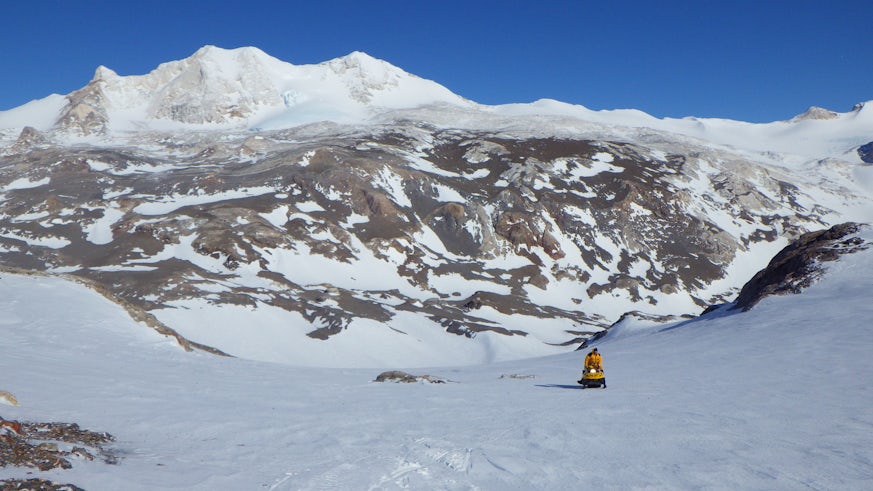Understanding the formation and evolution of blue-ice moraines
2 March 2022

Research co-authored by Dr Shasta Marrero of the School of Earth and Environmental Sciences has helped to develop a clearer understanding of the dynamic processes involved in blue-ice moraine formation, opening a deep window into the million-year history of the West Antarctic Ice Sheet.
Blue ice moraines have the potential for preserving long term records of ice-sheet changes, however, there is a limited understanding of how these types of moraines form and evolve over time.
Blue ice areas are located mostly in mountainous regions of Antarctica, where the scouring effects of the katabatic winds have persistently ablated the ice surface, in some cases for centuries. This process draws up deeper, older ice to the top, often bringing with it sediment from within the ice, such as rocks from the erosion of the glacier bed or meteorites falling onto the inner reaches of the ice sheet. Prevailing theories suggest that it is this material, once concentrated, that forms blue-ice moraines.
Moraine formation can be dated using a method known as cosmogenic nuclide dating, to provide age estimates for rock exposure at the Earth's surface. Current theories suggest that exposure age should increase when moving from the ice margin towards the bedrock, meaning that these deposits can be used to constrain ice-sheet history.
To test this notion, researchers visited the Patriot, Marble and Independence Hills in the southern Heritage Range of West Antarctica. The team used detailed field surveys combined with geophysical surveys of the internal structure of the moraines and cosmogenic nuclide exposure age dating.
The study shows that the bulk of the debris in the blue ice moraine is eroded from deep within the glacier and rises to the surface over thousands of years. At the surface, it is mixed with debris supplied by local glaciers and slope processes. Following a period of ice-sheet thinning, remnants of blue-ice moraine may continue to flow and/or ablate and disturb surface debris for thousands of years.
These findings suggest that many blue ice moraines in West Antarctica are dynamic and, whilst they persist through different glacial periods, they do not always neatly record ice sheet retreat patterns.
This research has helped us to gain a more thorough understanding of changes to Earth's ice sheets during previous climate fluctuations, which can be used to predict how the ice sheets may respond to future changes in our climate.
The research team included John Woodward, Kate Winter, Matthew J. Westoby and Michael Lim from Northumbria University, Andrew S. Hein and David E. Sugden from the University of Edinburgh, Stuart Dunning from Newcastle University, and Andrés Rivera from the University of Chile.
The research paper is available online on Science Direct: https://www.sciencedirect.com/science/article/pii/S2666033422000041